76% of salespeople say the most challenging parts of their job are prospecting and closing sales. The things that happen in between aren’t nearly as difficult as the beginning and end of the sales process. For many sales teams, it’s the close that’s the hardest part.
Once you’ve invested the time and energy to understand their business, found their pain point, and identified a solution, it’s time to close. It’s time for the formal presentation.
Your proposal doesn’t live in a vacuum. It lives alongside all the other interactions you’ve had with a client. At this stage, you’ve already done a sales pitch. The presentation is the final opportunity to reaffirm the benefits you’ve outlined and lock down the sale.
While a presentation on its own is rarely going to get the sale, taking these nine steps can improve your odds greatly.
1. Keep It Concise
Nobody wants to sit through a long PowerPoint or read through a long proposal. Keep it simple and straightforward. Get to the point quickly and practice an economy of words.
A great sales proposal will engage them to keep reading. Sometimes just a simple call to action in the summary will be enough to get them to read the key sections.
2. Deliver to the Right Person
If you’re not presenting to the right person, you’re just wasting your time. You need to make sure you are connected with the economic-decision maker with the ability to say yes.
In B2B sales, this can mean multiple decision-makers. The typical buying group can involve as many as 6-10 people. Getting the right people in the room or getting your business proposal in front of them at the right time is crucial.
3. Demonstrate You Understand
The single most important thing you do in sales is to get people to trust you. You’re asking them to believe you have the solution to their problem. That doesn’t happen if they don’t trust you.
This means you must demonstrate throughout the buying journey that you understand their business and the challenges they face. You can identify their pain points and show that you care.
Everyone loves to be heard – even hardened CEOs.
4. Lay Out Your Plan
Once you’ve framed the problem, it’s time to give them the solution. This is where you show how you are going to help them reach their goals and overcome their challenges.
You don’t need to be clever. It’s more important to be clear about what you’re recommending and how it will lay out.
- What specifically will you be doing for them?
- What will their involvement need to be?
- What’s the timeline?
- What resources are required?
Be transparent about deliverables, schedules, and expectations. If possible, try to anticipate the questions they might have and answer them before they are asked.
This is where you demonstrate the value you bring without making it sound like a sales pitch.
5. Ditch the Jargon
Avoid jargon and write in simple sentences in plain English. Be active and positive. You’re there to solve their problem not make them run for the dictionary.
Try to write the way you would say it. Avoid sounding like a research paper or using corporate-speak.
Which would you rather read?
- “A review has determined that the organisation’s human resources are not extracting sufficient purpose from their assigned job descriptions to efficiently fulfil their designated imperatives.”
- “Our research shows your staff needs more specific detail to do their jobs successfully.”
6. Watch Your Tone
Consider your audience and the best way to address them. While you want to appear as the expert offering them a valuable and essential service, remember they know their business better than anyone. You need to find the right balance between demonstrating your expertise and respecting theirs.
If you’re concerned with the tone of your business proposal, have a manager or colleague read through it. It may help to do some role-playing or sales training to refine your message.
7. Price Options
After you’ve laid out the plan and walked them through the benefits, you’ve got to explain your pricing. There’s a body of evidence that shows offering a range of price options works. Many salespeople present three options with low, middle, and high price points hoping the customer will choose the middle one.
It’s a valid strategy. There’s a lot to be said for the psychology of anchor pricing.
There’s another option you should consider. Offer them only one price.
By the time you’ve researched their business and dug deep to understand their problems, you should have a thorough grasp of their pain points and how your product or service can solve their problem. You’ll know their strengths and weaknesses and exactly how you can help them overcome the obstacles in the way of their growth.
You know what the best option is for them. So, tell them what it is and what it will cost. Don’t muddy the waters with choices – make it easy for them to say yes.
This gets customers to reframe their thinking to look at the value rather than just the price. That’s what you want. After all, if the customer truly believes your product or service can accomplish what you say it will, the price is rarely an obstacle.
If you get a price objection, it’s more likely you haven’t sold them on the value. If this happens, you either skipped a step somewhere in your discovery process or you need to identify the specific objection and overcome it before any sale will take place.
8. Blow Your Own Trumpet
You’ve now established you understand their business, your expertise, and the value you offer. Remind them why doing business with you is a smart choice. It’s not about bragging. It’s about demonstrating that you provide solutions.
This part of the business proposal is a great place to use client testimonials. Find relevant case studies to show how your products or services provided the solutions others needed and let them sing your praises for you.
In sales, you’re often in the business of risk mitigation. Spending money with you is a risk. Showing others that took that risk and saw the results they wanted can give your prospect confidence that the risk they’re taking doing business with you is justified.
It’s best to leave any horn-blowing until towards the end of your sales proposal. If you start with it or do it too soon, it can come off as too self-serving.
9. The Next Step
Now it’s time to close the deal. Detail the next step and what they need to do to get moving forward. It’s OK to give them a gentle nudge at this point. Be clear about what you want them to do and what it takes to do business with you.
A Final Note
There you have it. Follow these 9 steps and you will create a better business proposal and improve your closing ratio.
One last note: If you’re sending the proposal by email, call them the same day you send it to make sure they’ve received it and answer any additional questions they may have. Help lock it down so you can get on with business and create a mutually beneficial relationship and a business future they can be excited about.





